On our most recent trip to St. Augustine, we explored Washington Oaks Gardens State Park. Located just 25 miles south of St. Augustine in Palm Coast, the 425-acre park boasts a bevy of large oak trees, hiking trails, formal gardens, a beach, and a fishing area.
Hiking Trails
Before heading to the gardens at Washington Oaks, we hiked the 1.8-mile Bella Vista Trail at the north end of the park. The lush hammock of palm trees and mature evergreens provided shade among the sandy paths.
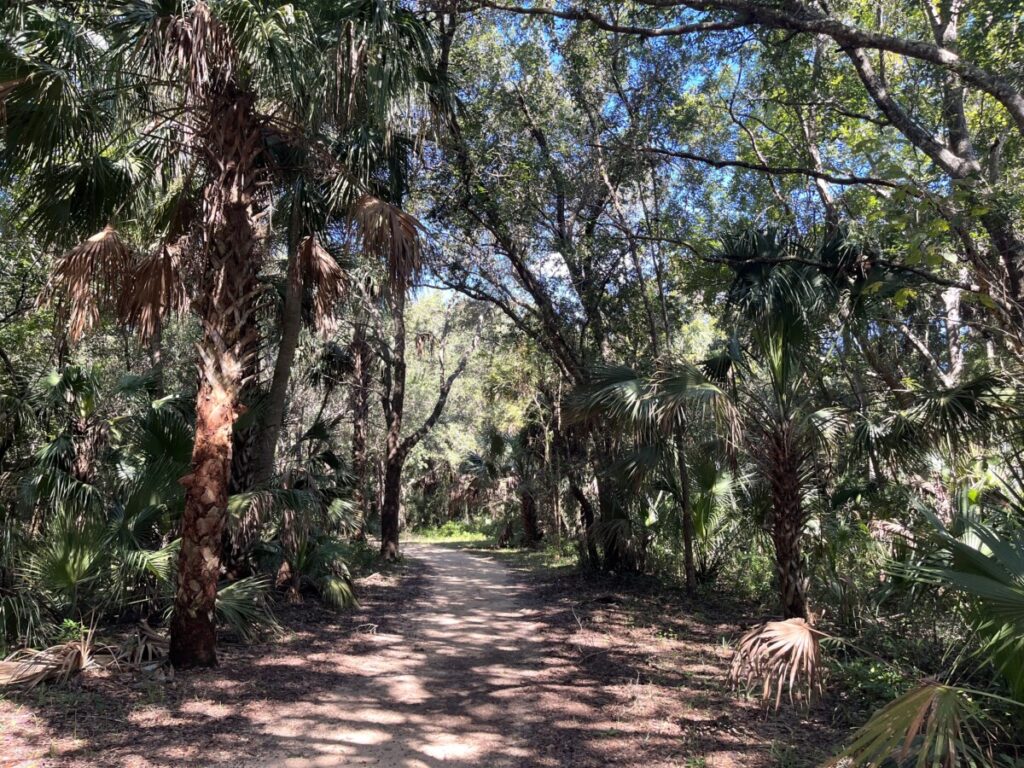
The trail led us across Old Highway A1A. In 1926, the state constructed this highway stretching 338 miles from Fernandina to Key West with the name FLA 140. When Florida renumbered all the highways in 1945, FLA 140 became State Road 1. This caused significant confusion with US Highway 1. Once again, the state renamed the road to A1A (Atlantic 1 Alternate). A few years later, construction workers moved this part of the highway running in front of the Washington Oaks property a few miles east.
Formal Gardens
Now for the highlight – the 20-acre formal gardens! We ambled along the walkways dotted with palm trees and other evergreen trees not knowing where the paths would lead. I’m not a plant connoisseur, but I enjoyed the different types of grasses and ferns we walked past.

The trail opened up to a lagoon with a water fountain in the center. Spanish moss draped from the oak trees creating a shady haven on the sunny day. Lush vegetation surrounded the pond area and we sat on a bench taking it in. The trail wound around to another section of the lagoon with a bridge and later to an enclave with a gazebo. While not much was in bloom, the greenery displayed plenty of beauty.
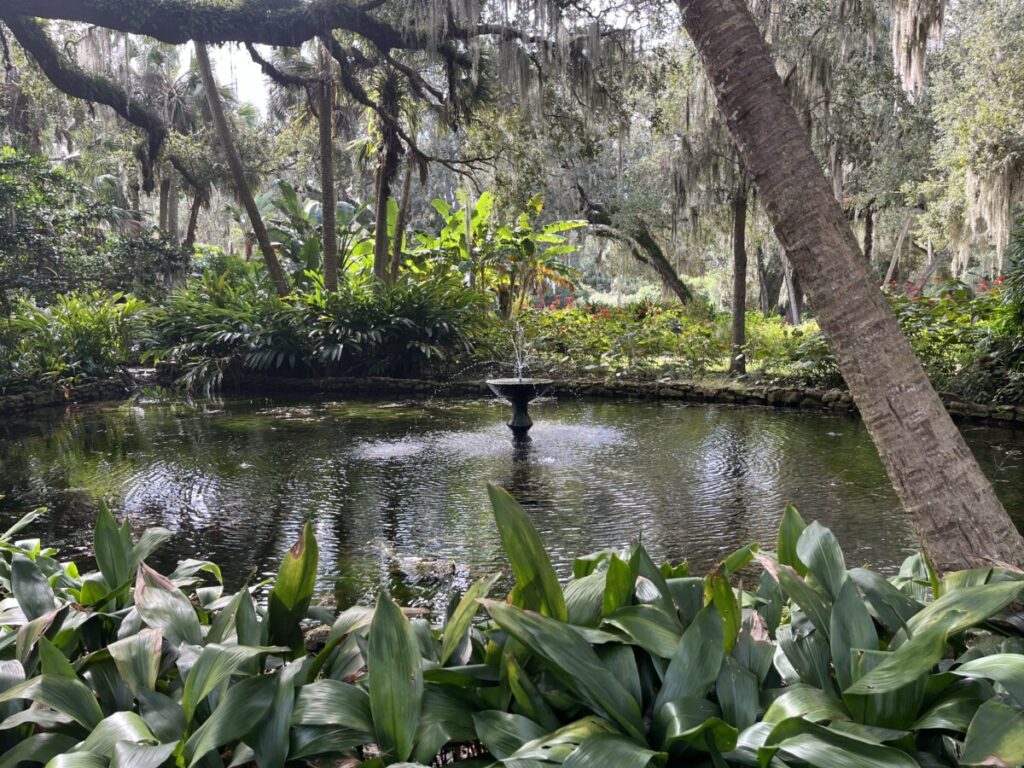
So who planted these gardens? The credit goes to Louise Powis Clark Young. Her husband, Owen D. Young, founder of RCA and a former Chairman of the Board at General Electric, purchased the rundown Bella Vista Plantation as a winter residence around 1936. After the two previously widowed individuals married in early 1937, Louise began designing the formal gardens and citrus grove.
The Rose Garden
We left the area filled with camellias, birds of paradise, and other plantings and headed to the rose garden where the colorful blooms beckoned us. We hit the park at the right time as the rose smell wafted through the air. I didn’t find out until later, but roses smell different at different times of the day. Fortunately for us, roses generally give off the strongest fragrance during the morning hours.
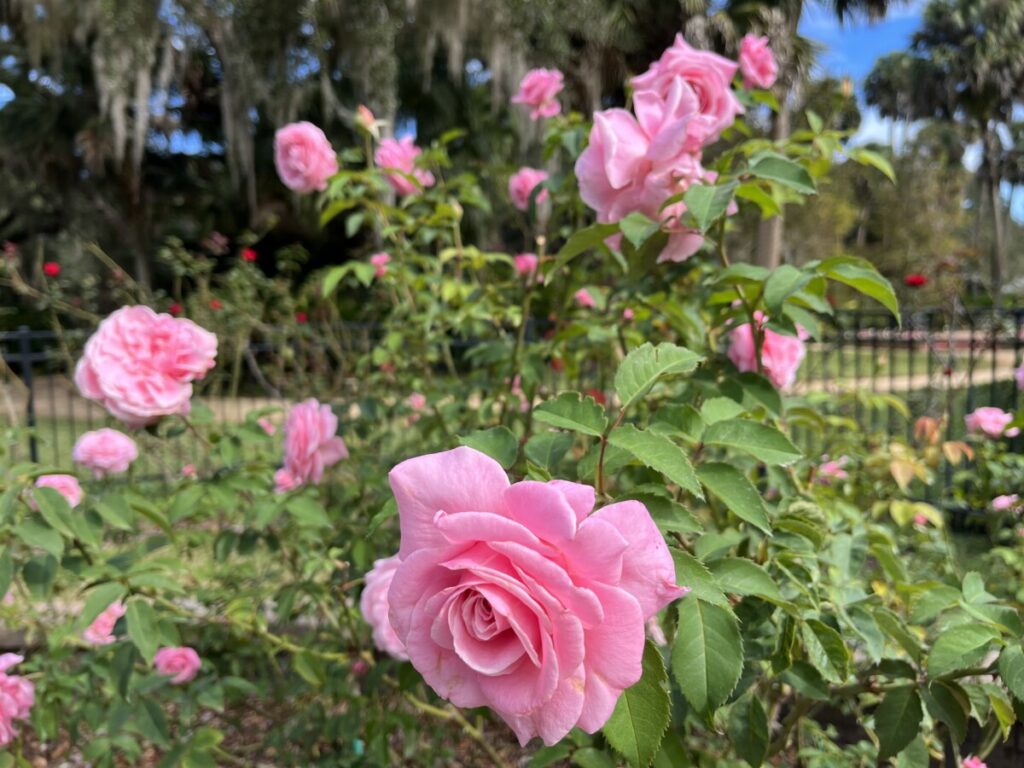
The rose beds, each containing a different rose variety, are laid out in a circular pattern to a central focal point. While the peak bloom time is in May, we saw plenty of roses in October. Keep in mind, the park cuts the roses back in February so you won’t see any blooms until late April. Interestingly enough, at 3,000 square feet, the Rose Garden at Washington Oaks is the largest public rose garden on the Florida coast.
The Matanzas River
We kept following the pathways and soon exited the formal gardens. We stopped by a marker designating the site of Washington Place, the fishing lodge of the heirs of Bella Vista Plantation.
In 1818, Jose Hernandez purchased what he later named Bella Vista. In 1845, Hernandez’s daughter Luisa married George L. Washington, a distant cousin of the US first president. George officially purchased the property in 1888 and neighbors called it the Washington Place. Widowed, he used the area as a hunting and fishing lodge until it burned around 1900. His heirs sold the property in 1923.
A few steps ahead, glistening water peeked behind the bushes. The path opened up and we found ourselves on a seawall fronting the Matanzas River. On this particular day, many visitors fished and families set up picnics on the multitude of tables.
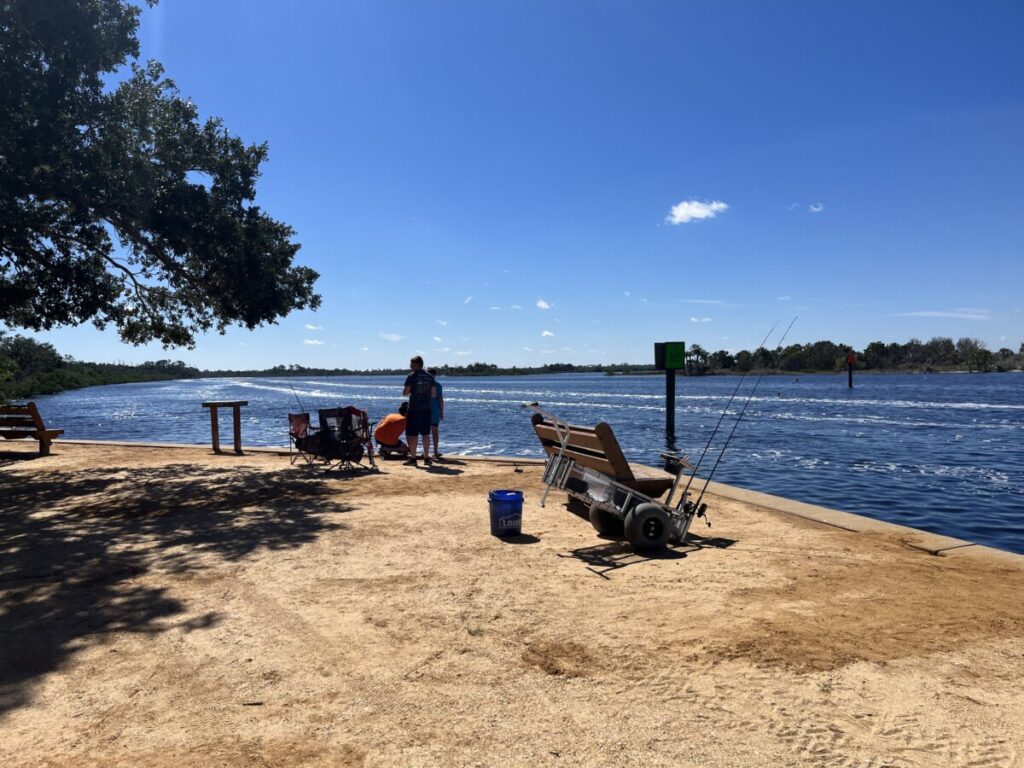
Just a few minutes before, we sat in a lush shady garden; now we walked out in the open in a beachlike setting. I loved the sudden change in scenery. The Matanzas River, part of the Intercoastal Waterway, begins in St. Augustine and stretches about 23 miles. You can read my blog about Fort Matanzas, a few miles north, which helped protect St. Augustine.
The Young House
Right off the riverfront, the Young residence (which is more of a bungalow) blended into the landscape. Inside, the Tudor-style living room gave magnificent views of the Matanzas River. Louise and Owen built the house shortly after acquiring the property and today, it houses the visitor center.
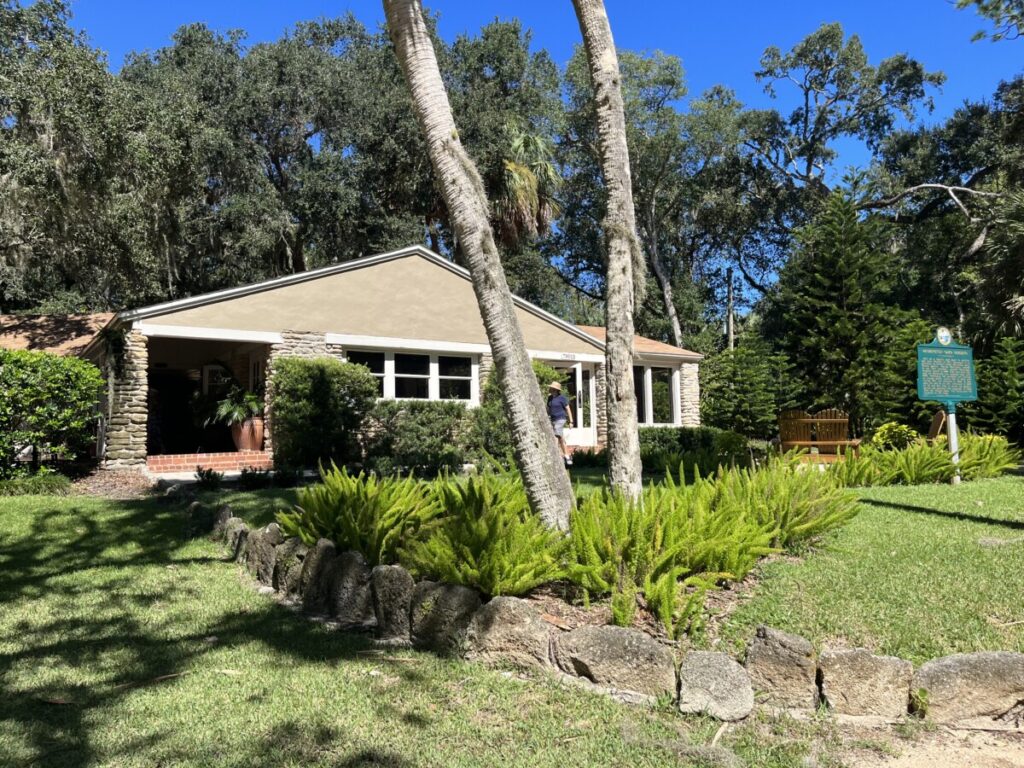
In addition to public restrooms and a water fountain, the house provides detailed information about the history of the park. Charles Washington sold the property in 1923, but not to someone wanting to maintain the property – but rather, to a real estate developer who planned a subdivision called Hernandez Estates. Had it not been for two hurricanes and a decline in the Florida real estate market, this park wouldn’t be here today.
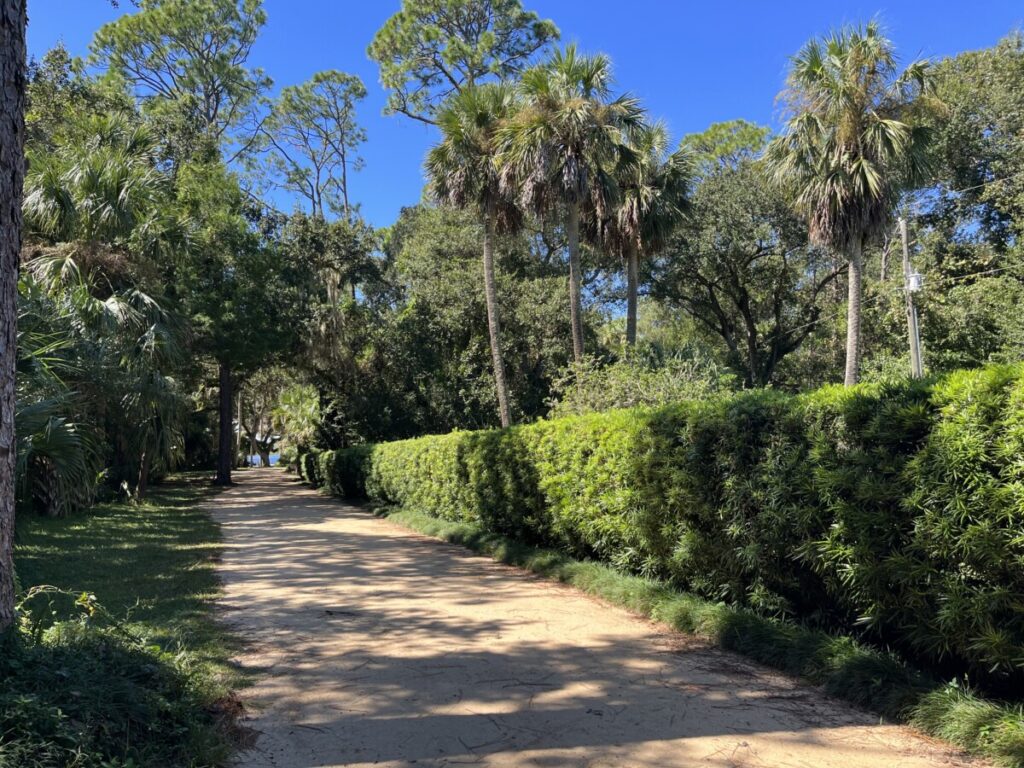
When the Youngs purchased the property in the 1930s, they renamed it Washington Oaks in honor of the Washington heirs and the large oak trees spread throughout the property. They spent over two decades developing the gardens and growing fruit in the citrus groves. When Owen passed away in 1962 at age 87, Louise gave the land to the state of Florida with the condition they maintain the gardens. In 1979, the state purchased property along the Atlantic Ocean, known for coquina rocks, and added it to the park.
More about the Property
Before driving over to the Atlantic Ocean side of the park, we explored the property a bit more. We walked around the greenhouse Louise built in the 1940s for her orchids, the citrus groves, and a grassy area with a stage for outdoor performances. The park also runs a small gift shop on this end of the estate.
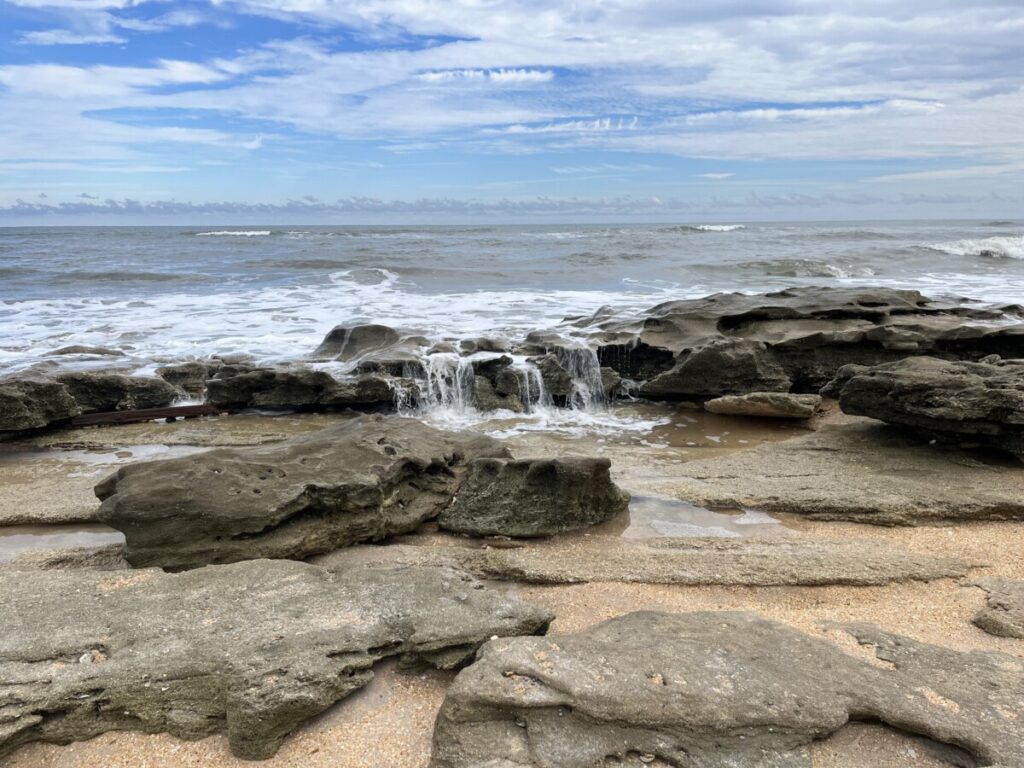
At the Atlantic Ocean, we walked along the beach to see the large grouping of coquina rocks. Early settlers used the rock, formed by seashells and sand, to build the Castillo, Fort Matanzas, and many other buildings. Although the beach wasn’t part of the original Young property, it is beautiful.
More Information
The entrance to the park is $5 per vehicle and is based on the honor system. The beach area is a short drive from the park so you’ll want to keep your receipt displayed on your dash showing you’ve paid the park fee.
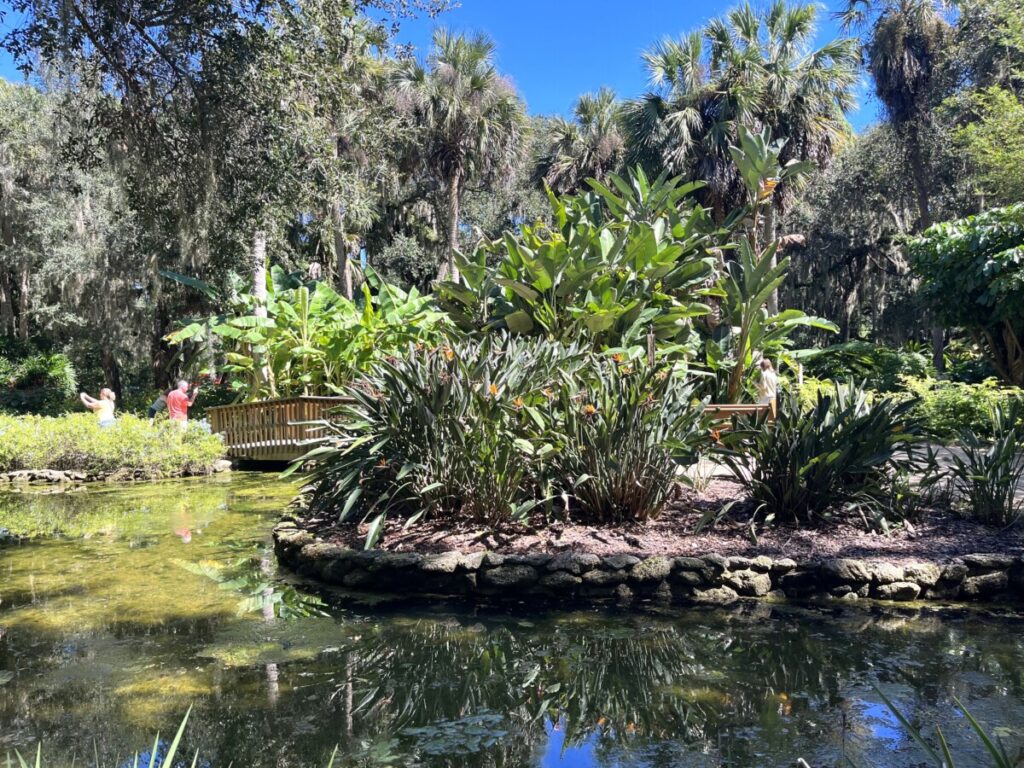
Dogs are allowed on the hiking trails, but not in the formal gardens or the beach area. During park hours from 8am to sunset every day, visitors can fish and enjoy a picnic. Every month the park offers a complimentary garden tour at 10am on the first Friday of the month and a plant sale from 10am-1pm on the second Saturday of the month.
For more information, see the park’s website here.
